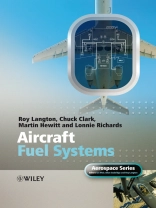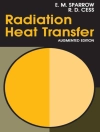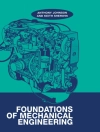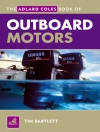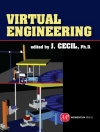All aspects of fuel products and systems including fuel handling, quantity gauging and management functions for both commercial (civil) and military applications.
The fuel systems on board modern aircraft are multi-functional, fully integrated complex networks. They are designed to provide a proper and reliable management of fuel resources throughout all phases of operation, notwithstanding changes in altitude or speed, as well as to monitor system functionality and advise the flight crew of any operational anomalies that may develop.
* Collates together a wealth of information on fuel system design that is currently disseminated throughout the literature.
* Authored by leading industry experts from Airbus and Parker Aerospace.
* Includes chapters on basic system functions, features and functions unique to military aircraft, fuel handling, fuel quantity gauging and management, fuel systems safety and fuel systems design and development.
* Accompanied by a companion website housing a MATLAB/SIMULINK model of a modern aircraft fuel system that allows the user to set up flight conditions, investigate the effects of equipment failures and virtually fly preset missions.
Aircraft Fuel Systems provides a timely and invaluable resource for engineers, project and programme managers in the equipment supply and application communities, as well as for graduate and postgraduate students of mechanical and aerospace engineering. It constitutes an invaluable addition to the established Wiley Aerospace Series.
Inhoudsopgave
Acknowledgements xiii
List of Acronyms xv
Series Preface xix
1 Introduction 1
1.1 Review of Fuel Systems Issues 2
1.2 The Fuel System Design and Development Process 11
1.3 Fuel System Examples and Future Technologies 15
1.4 Terminology 15
2 Fuel System Design Drivers 19
2.1 Design Drivers 21
2.2 Identification and Mitigation of Safety Risks 27
3 Fuel Storage 31
3.1 Tank Geometry and Location Issues for Commercial Aircraft
32
3.2 Operational Considerations 36
3.3 Fuel Tank Venting 41
3.4 Military Aircraft Fuel Storage Issues 45
3.5 Maintenance Considerations 49
4 Fuel System Functions of Commercial Aircraft 53
4.1 Refueling and Defueling 54
4.2 Engine and APU Feed 59
4.3 Fuel Transfer 70
4.4 Fuel Jettison 73
4.5 Fuel Quantity Gauging 76
4.6 Fuel Management and Control 84
4.7 Ancillary Systems 93
5 Fuel System Functions of Military Aircraft and Helicopters
97
5.1 Refueling and Defueling 98
5.2 Engine and APU Feed 103
5.3 Fuel Transfer 104
5.4 Aerial Refueling 106
5.5 Fuel Measurement and Management Systems in Military
Applications 112
5.6 Helicopter Fuel Systems 116
6 Fluid Mechanical Equipment 119
6.1 Ground Refueling and Defueling Equipment 120
6.2 Fuel Tank Venting and Pressurization Equipment 133
6.3 Aerial Refueling Equipment 137
6.4 Equipment Sizing 142
6.5 Fuel Pumps 143
7 Fuel Measurement and Management Equipment 157
7.1 Fuel Gauging Sensor Technology 158
7.2 Harnesses 195
7.3 Avionics Equipment 197
8 Fuel Properties 203
8.1 The Refinement Process 203
8.2 Fuel Specification Properties of Interest 205
8.3 Operational Considerations 209
9 Intrinsic Safety, Electro Magnetics and Electrostatics
215
9.1 Intrinsic Safety 216
9.2 Lightning 217
9.3 EMI/HIRF 221
10 Fuel Tank Inerting 225
10.1 Early Military Inerting Systems 225
10.2 Current Technology Inerting Systems 229
10.3 Design Considerations for Open Vent Systems 235
10.4 Operational Issues with Permeable Membrane Inerting Systems
236
11 Design Development and Certification 239
11.1 Evolution of the Design and Development Process 239
11.2 System Design and Development – a Disciplined
Methodology 243
11.3 Program Management 248
11.4 Maturity Management 254
11.5 Installation Considerations 256
11.6 Modeling and Simulation 259
11.7 Certification 263
11.8 Fuel System Icing Tests 268
12 Fuel System Design Examples 271
12.1 The Bombardier Global Express 272
12.2 Embraer 170/190 Regional Jet 280
12.3 The Boeing 777Wide-Bodied Airliner 288
12.4 The Airbus A380Wide-Bodied Airliner 301
12.5 The Anglo-French Concorde 315
13 New and Future Technologies 327
13.1 Fuel Measurement and Management 327
13.2 Fluid Mechanical Equipment Technology 331
13.3 Aerial Refueling Operations 338
References 339
Index 341
Over de auteur
Roy Langton has recently retired from his position as Vice-President, Engineering & Integrity at Parker Aerospace, where he was responsible for internal seminars & training into feedback control.
